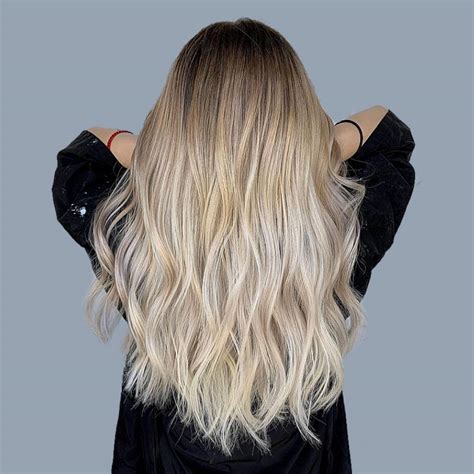Introduction:

Wigs have come a long way since the days of Marie Antoinette and her towering coifs. Today, they’re a versatile and affordable way to change up your look, enhance your confidence, or simply protect your natural hair. Whether you’re new to the world of wigs or a seasoned pro, there’s always something new to learn about these transformative hairpieces.
Types of Wigs:
Wigs come in a wide variety of styles and materials, each with its own unique benefits and drawbacks. Here’s a breakdown of the most common types:
- Human Hair Wigs: These wigs are made from real human hair, which gives them the most natural look and feel. They can be washed, styled, and colored just like your own hair. However, they are also the most expensive type of wig.
- Synthetic Hair Wigs: Synthetic hair wigs are made from artificial fibers that are more durable and less expensive than human hair wigs. They come in a wide range of styles and colors, and they can be heat-styled with caution.
- Lace Wigs: Lace wigs are made with a delicate lace cap that creates the illusion of hair growing directly from the scalp. They are the most undetectable type of wig, but they also require more care and maintenance.
- 360 Wigs: 360 wigs have a lace cap that extends all the way around the head, giving them a natural look from all angles. They are perfect for ponytails, buns, and other updos.
Choosing the Right Wig for You:
Choosing the right wig for you depends on a number of factors, including your budget, hair type, and desired look. Here are a few tips to help you make the best decision:
- Consider your budget: Human hair wigs are more expensive than synthetic hair wigs, but they offer a more natural look and feel.
- Think about your hair type: If you have fine or thin hair, a lace wig or a 360 wig can help create the illusion of volume. If you have thick or coarse hair, a synthetic hair wig may be a more durable and affordable option.
- Decide on a style: There are endless styles of wigs available, from long and flowing to short and sassy. Choose a style that complements your face shape and personal style.
Caring for Your Wig:
Wigs require special care to keep them looking their best. Here are a few tips for maintaining your wig:
- Wash your wig regularly: How often you need to wash your wig depends on how often you wear it and how oily your hair is. A general rule of thumb is to wash your wig every 7-10 days.
- Use a gentle shampoo and conditioner: When washing your wig, use a shampoo and conditioner that is specifically designed for wigs. Avoid using harsh products that can damage the hair fibers.
- Air dry your wig: After washing your wig, let it air dry on a wig stand. Do not put it in the dryer, as this can damage the hair fibers.
- Store your wig properly: When you’re not wearing your wig, store it in a cool, dry place. Avoid storing it in direct sunlight or in a humid environment.
Tips and Tricks:
Here are a few tips and tricks to help you get the most out of your wig:
- Use a wig brush: A wig brush is specially designed to gently remove tangles and frizz from wigs. Avoid using regular hairbrushes, which can damage the hair fibers.
- Apply heat sparingly: Heat can damage wig hair fibers, so it’s important to use it sparingly. If you need to style your wig with heat, use a low heat setting and a heat protectant spray.
- Protect your wig from the sun: The sun’s UV rays can damage wig hair fibers, so it’s important to protect your wig when you’re outdoors. Wear a hat or scarf to cover your wig, or use a UV protectant spray.
Conclusion:
Wigs are a great way to change up your look, enhance your confidence, or simply protect your natural hair. With so many different types and styles of wigs available, there’s sure to be a wig that’s perfect for you. By following these tips and tricks, you can keep your wig looking its best for years to come.
Tables:
| Wig Type | Pros | Cons |
|---|---|---|
| Human Hair Wigs | Natural look and feel | Expensive |
| Synthetic Hair Wigs | Affordable | Less natural look |
| Lace Wigs | Undetectable | Require more care |
| 360 Wigs | Natural look from all angles | More expensive |
| Wig Care | Frequency | Instructions |
|---|---|---|
| Wash | 7-10 days | Use a gentle shampoo and conditioner |
| Condition | Every 2-3 washes | Use a conditioner specifically designed for wigs |
| Brush | Daily | Use a wig brush to gently remove tangles and frizz |
| Trim | As needed | Trim any split ends to prevent further damage |
| Wig Styling | Products | Techniques |
|---|---|---|
| Heat styling | Heat protectant spray | Use a low heat setting and avoid using heat tools too often |
| Curling | Curling iron | Wrap a small section of hair around the curling iron and hold for a few seconds |
| Straightening | Flat iron | Glide the flat iron over a small section of hair to straighten it |
| Volumizing | Volumizing spray | Spray volumizing spray onto the roots of your hair and blow dry |
| Wig Storage | Location | Conditions |
|---|---|---|
| Wig stand | Cool, dry place | Avoid storing in direct sunlight or in a humid environment |
| Wig bag | Travel | Protect your wig from dust and dirt |
| Wig box | Long-term storage | Keep your wig in a wig box when you’re not wearing it |
